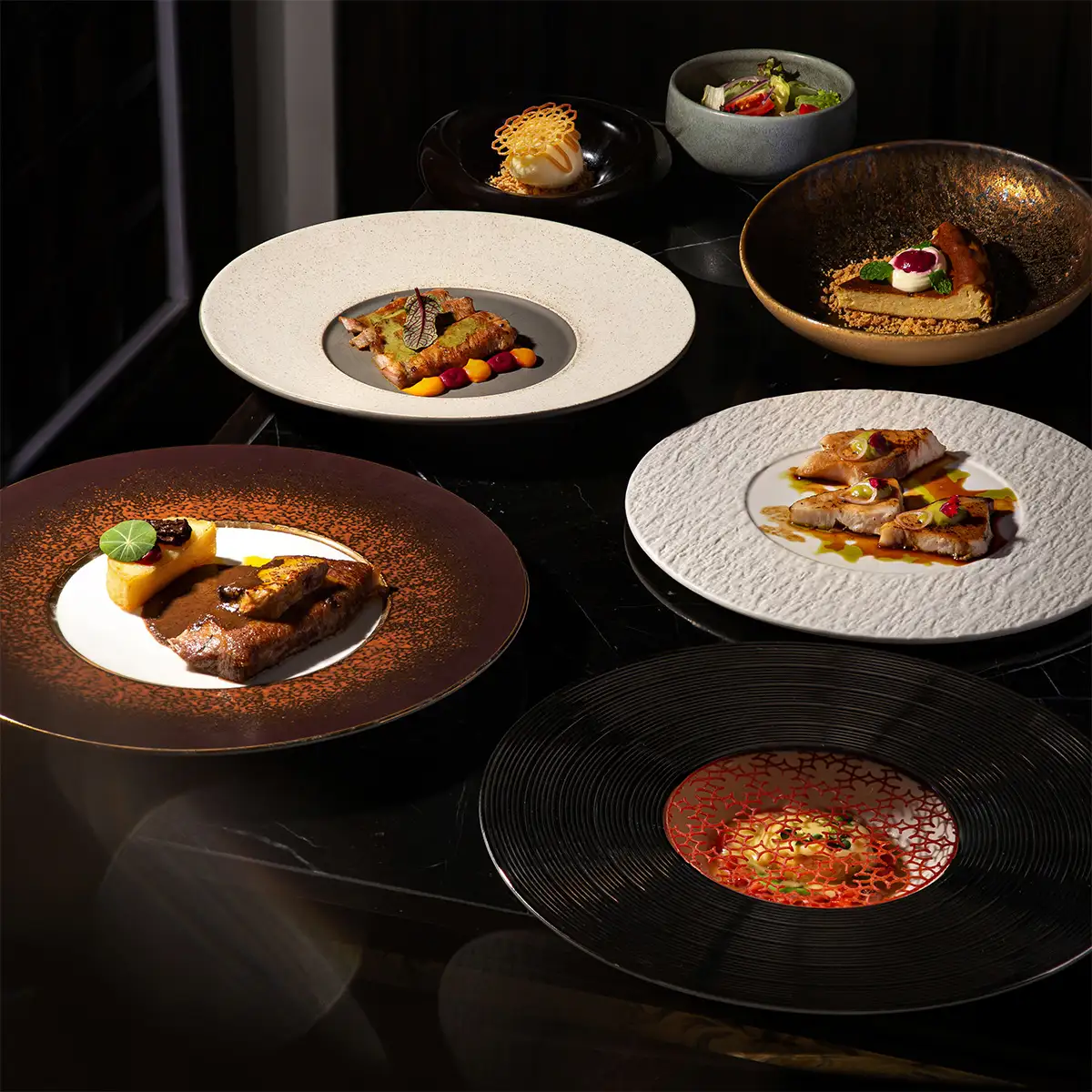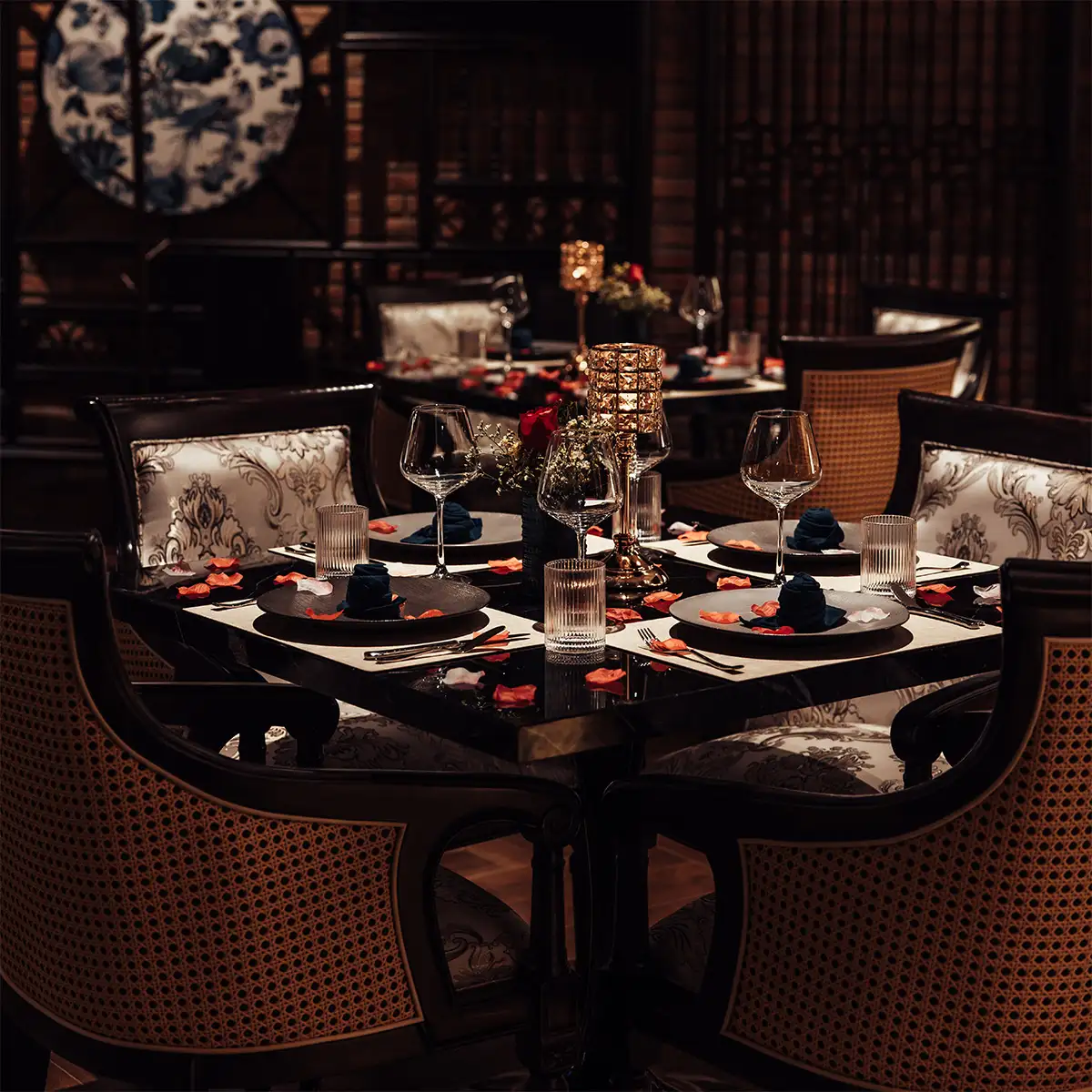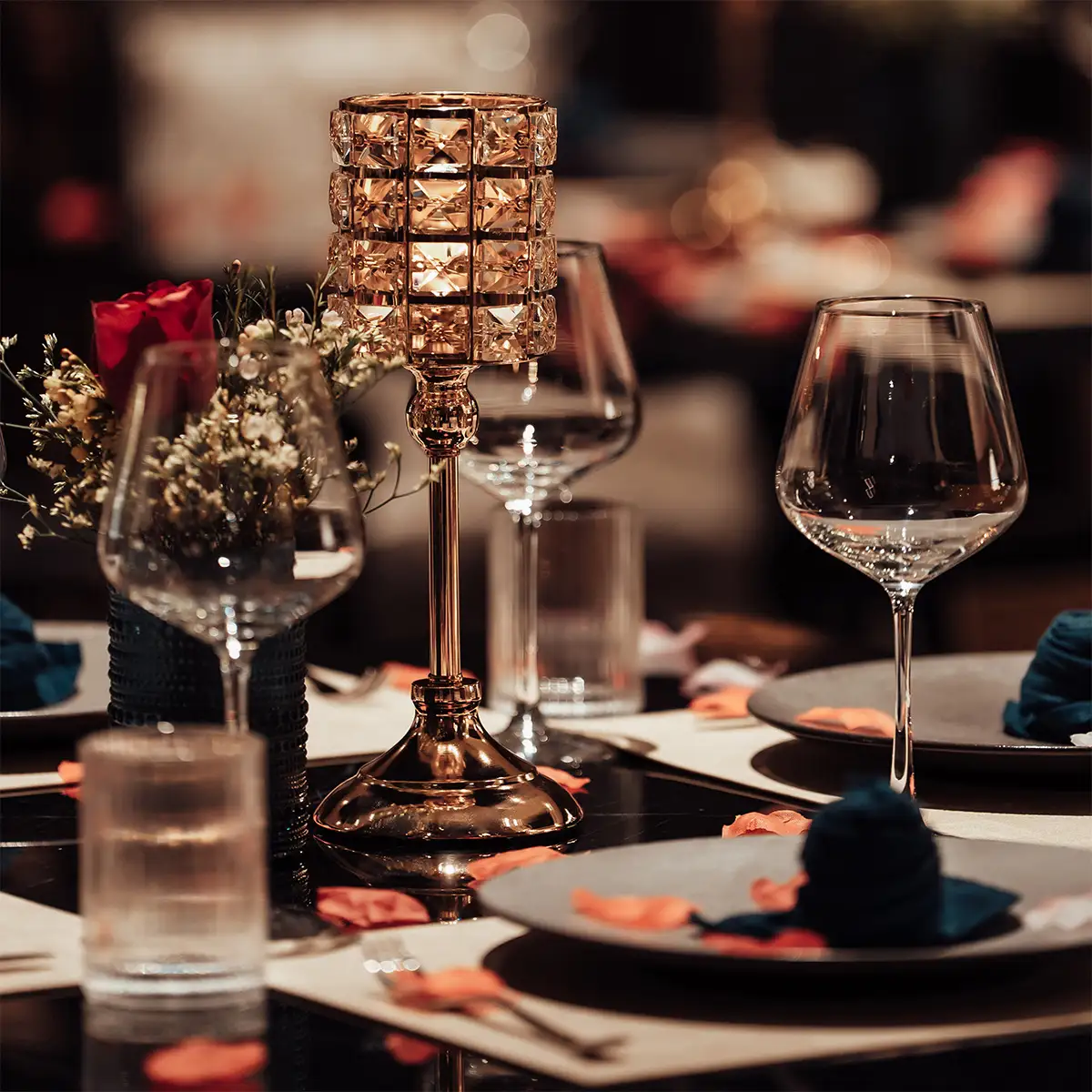- 1. Understanding the essence: What makes caviar in fine dining staple?
- 1.1. What is caviar? Defining the delicacy
- 1.2. The allure of exclusivity: Why is caviar so revered?
- 1.3. The sensory profile: What does caviar taste and feel like?
- 2. The elite varieties: A guide to the world's finest caviars
- 2.1. The "Big Three" classic caviars:
- 2.2. Emerging and sustainable caviars:
- 3. The art of enjoyment: Serving and pairing caviar
- 4. Caviar in the culinary landscape: From tradition to innovation
- 5. Experience the pinnacle of luxury at Moca Dining
In the world of ultimate luxury, few ingredients command as much reverence and mystique as caviar. Often referred to as "black gold" or the "jewels of the ocean," this delicacy has long been the definitive symbol of opulence and refined taste. Yet, beyond its lustrous reputation lies a complex world of history, craftsmanship, and unparalleled sensory pleasure. This guide serves to demystify caviar in fine dining, exploring its profound significance and its unique contribution to the highest echelons of gastronomic artistry. At Moca Dining, where we are purveyors of exceptional culinary experiences, we believe a true appreciation of this exquisite ingredient enhances the journey.
1. Understanding the essence: What makes caviar in fine dining staple?
1.1. What is caviar? Defining the delicacy
In precise culinary terms, true caviar refers exclusively to the unfertilized, salt-cured roe of specific sturgeon species, such as Beluga, Osetra, and Sevruga. This definition is essential, as it distinguishes authentic caviar from other types of roe—like the bright orange eggs of salmon (ikura), the crisp beads of flying fish (tobiko), or the milder roe of trout and whitefish. While these varieties are enjoyed in many global cuisines, only sturgeon roe holds the distinguished classification of true caviar.
The role of caviar in fine dining goes far beyond mere garnish or luxury status symbol. It is prized for its delicate texture, nuanced brininess, and ability to elevate a dish with even the smallest spoonful. Its presence on a menu signals refinement, craftsmanship, and attention to detail. Traditionally served on blinis or with crème fraîche, caviar in contemporary settings is just as likely to be found topping poached eggs, enhancing beef tartare, or paired with oysters—each application showcasing the ingredient’s versatility and enduring elegance. Ultimately, caviar in fine dining represents a pinnacle of taste, tradition, and sophistication.

Elegance in every pearl — the true art of sturgeon caviar.
1.2. The allure of exclusivity: Why is caviar so revered?
The esteemed status of caviar in fine dining is rooted in a unique convergence of history, rarity, and craftsmanship. Once reserved for royalty and aristocracy, caviar’s association with luxury has endured through centuries. Today, that prestige is reinforced by the biological and environmental challenges surrounding its production. Many sturgeon species—the sole source of true caviar—are now endangered, and their populations are carefully regulated and protected. Compounding this rarity is the natural biology of the sturgeon itself; these ancient fish can take 8 to 12 years, or even longer, to reach maturity and produce viable roe.
Beyond rarity, the production process of caviar in fine dining further underscores its exclusivity. Harvesting and curing the roe is a meticulous, labor-intensive process that demands exceptional care to preserve the delicate texture and appearance of each egg. This level of precision requires highly skilled artisans and controlled conditions, all of which add to the cost. As a result, premium-grade caviar commands high prices—Beluga caviar, for example, can exceed $200 to $300 per ounce (approximately 28 grams), while top-tier Ossetra typically ranges from $100 to $200 per ounce. The combination of time, rarity, and artisanal effort ensures that caviar remains not only a culinary delicacy but also a symbol of refinement and prestige in the world of haute cuisine.
1.3. The sensory profile: What does caviar taste and feel like?
The experience of tasting high-quality caviar is a sublime event. The flavor profile is remarkably nuanced, often described as a subtle brininess reminiscent of a fresh ocean breeze, complemented by rich, nutty, and buttery notes. The texture is perhaps its most defining characteristic: a delicate "pop" as the beads burst against the palate, releasing a smooth, creamy, and utterly decadent liquid. The aroma should be clean and fresh. Culinary science reveals that this unique profile is due to a complex interplay of compounds. Amino acids like glutamic acid provide the savory umami depth, while lipids contribute to the creamy, melt-in-the-mouth texture. The subtle brininess comes from specific salts and minerals absorbed from the sturgeon's aquatic environment.
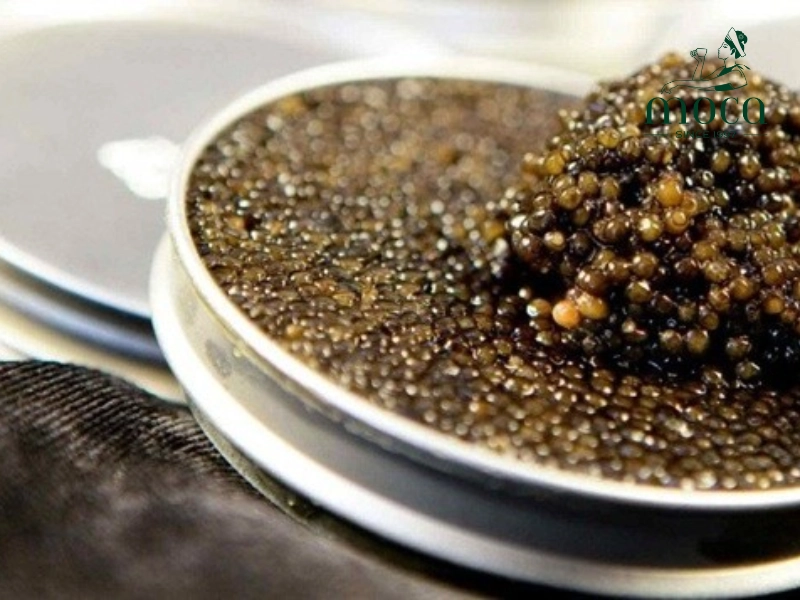
Rare, refined, and revered — the essence of true caviar luxury.
2. The elite varieties: A guide to the world's finest caviars
While there are several types of sturgeon, a few have become legendary in the fine dining world.
2.1. The "Big Three" classic caviars:
- Beluga (Huso huso): Hailing from the Caspian Sea, Beluga is the pinnacle of luxury. It is prized for its large, pea-sized eggs (the largest of all sturgeon) and exceptionally soft, delicate texture. The flavor is famously smooth, buttery, and mild, with a long, creamy finish. The eggs range in color from light gray to near black.
- Ossetra (Acipenser gueldenstaedtii): A favorite among connoisseurs, Ossetra offers a more complex and robust experience. The medium-sized, firm eggs have a distinct nutty and sometimes fruity flavor profile. Its color is highly variable, ranging from deep brown to a coveted golden-amber hue, which often indicates greater maturity and flavor complexity.
- Sevruga (Acipenser stellatus): Sevruga offers the most intense and assertive flavor of the classic trio. The eggs are the smallest and typically grayish-black. Its taste is distinctly briny and full-bodied, delivering a powerful and satisfying caviar experience.
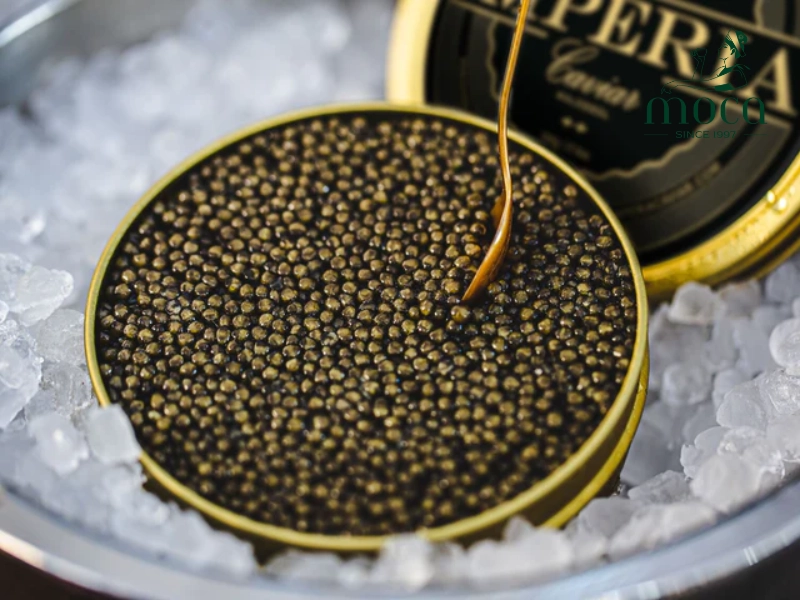
The Big Three of caviar — Beluga, Ossetra, and Sevruga, each a world of flavor
2.2. Emerging and sustainable caviars:
With conservation efforts rightly restricting the trade of wild sturgeon, ethical aquaculture has become the new gold standard for sourcing caviar in fine dining. Responsible farming practices now allow chefs and consumers to enjoy this delicacy without contributing to the decline of endangered species. As a result, world-class sustainable caviars have emerged, offering exceptional quality that rivals their wild counterparts while aligning with modern environmental values.
- Kaluga (Huso dauricus x Acipenser schrenckii): Often referred to as “River Beluga,” this prized hybrid of sturgeon species produces large, glossy pearls that burst with a rich, buttery flavor. Its texture and depth closely resemble that of traditional Beluga caviar, making it a favored choice in fine dining establishments seeking sustainability without compromise.
- Siberian (Acipenser baerii): Known for its clean, fresh character and slightly nutty undertones, Siberian caviar offers a more delicate yet refined experience. Its dark, medium-sized eggs provide a beautifully balanced profile, making it an ideal introduction to caviar in fine dining or a thoughtful complement to lighter, modern dishes.
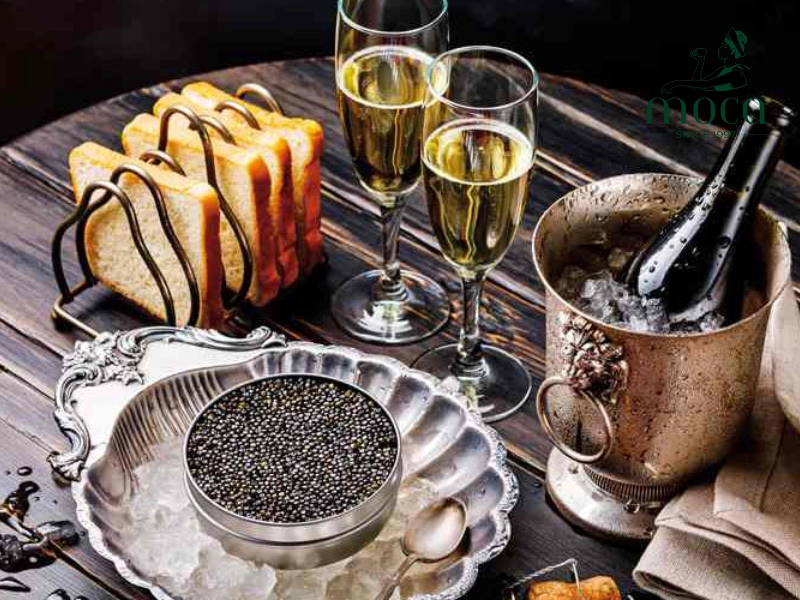
Luxury meets sustainability — Kaluga and Siberian caviars for the conscious connoisseur.
3. The art of enjoyment: Serving and pairing caviar
To fully appreciate caviar, it must be served with respect for tradition and technique.
- The ritual of serving caviar: The service of caviar is a ceremony in itself. It must be served thoroughly chilled, ideally between 28-32°F (-2 to 0°C), to preserve its delicate texture and flavor. It is presented in a non-metallic bowl, typically glass or ceramic, which is then set atop a larger vessel filled with crushed ice. Critically, only non-reactive utensils made of mother-of-pearl, bone, or even gold should be used, as silver or other metals can impart an undesirable metallic taste.
- Classic accompaniments and pairings: While the purest way to enjoy caviar is straight from the spoon, traditional accompaniments are designed to complement, not overpower, its flavor. These include blinis (small, savory Russian pancakes), crème fraîche, and finely minced accompaniments like chives, red onion, and sieved hard-boiled egg whites and yolks. For beverage pairings, the crisp acidity and effervescence of a Brut Champagne or a Blanc de Blancs are classic choices. Alternatively, a clean, ice-cold premium vodka offers a traditional and pristine pairing.
- Handling and storage: Proper storage is paramount. An unopened tin of caviar should be kept in the coldest part of the refrigerator. Once opened, it is highly perishable and should be consumed within one to two days, kept tightly sealed to minimize exposure to air.
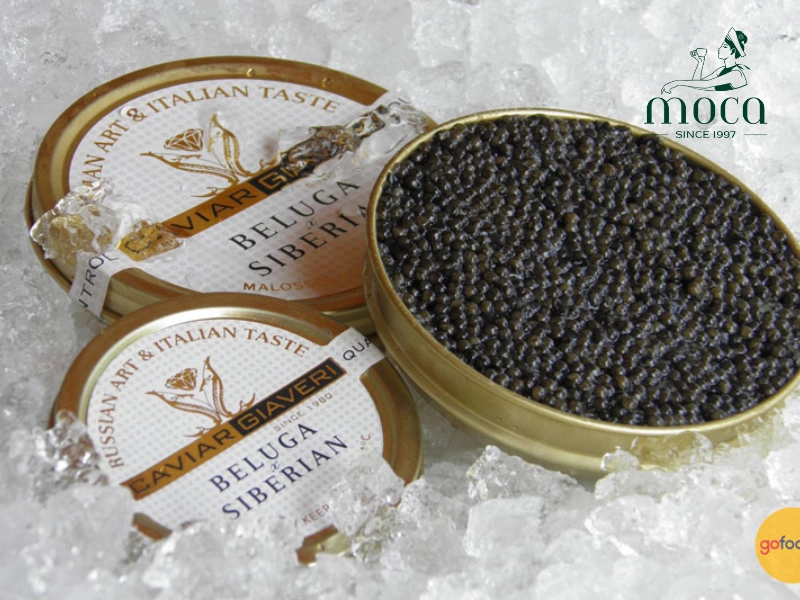
Serve chilled, savor tradition — the ritual of perfect caviar enjoyment.
4. Caviar in the culinary landscape: From tradition to innovation
- Classic fine dining applications: In traditional fine dining, caviar is often presented with elegant simplicity. Iconic applications include the "caviar bump" (a small amount tasted from the back of the hand), served on delicate toast points, or as a luxurious garnish for oysters. Legendary dishes from globally renowned restaurants often feature caviar as the star, such as Thomas Keller's "Oysters and Pearls," a sabayon of pearl tapioca with oysters and a generous quenelle of white sturgeon caviar.
- Modern interpretations and chef creativity: Contemporary chefs continue to innovate, incorporating caviar in more creative ways. It might appear as a saline counterpoint in a delicate sauce, a finishing touch on a seafood main course, or in unexpected pairings that challenge convention. The philosophy remains the same: to use caviar's intensity to elevate a dish, requiring a masterful understanding of flavor balance to ensure it enhances, rather than overwhelms, the other components.
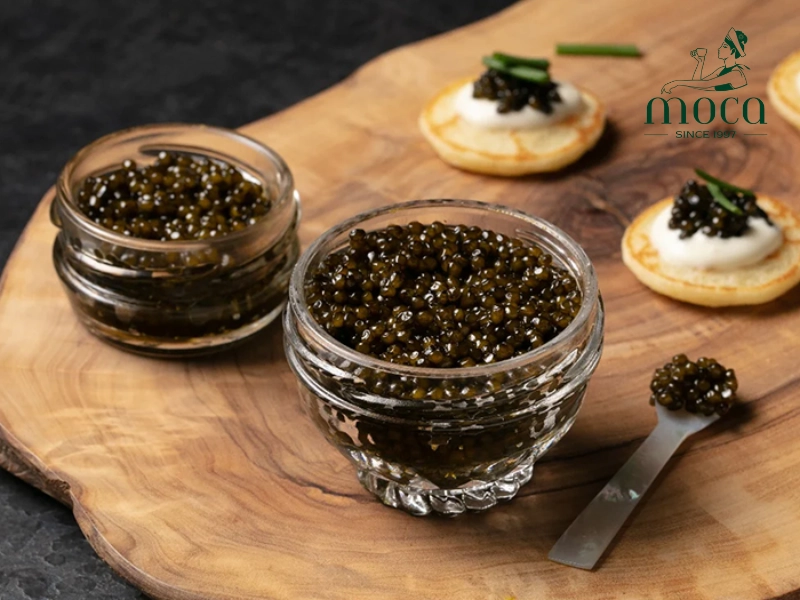
From timeless tradition to modern artistry — caviar’s culinary journey.
5. Experience the pinnacle of luxury at Moca Dining
At Moca Dining, our commitment to caviar in fine dining is absolute. We are dedicated to sourcing only the highest quality, sustainably farmed caviar from the world's most reputable suppliers. Our culinary team possesses the expertise and reverence necessary to craft exquisite dishes that allow the nuanced, delicate flavors of this ingredient to shine, presenting it in both classic and contemporary styles.
We invite you to experience this unrivaled sophistication. Whether you wish to indulge in a traditional caviar service or explore one of our chef's magnificent creations, a taste of unparalleled luxury awaits. We encourage you to make a reservation and allow us to guide you through the magnificent world of caviar at Moca Dining.
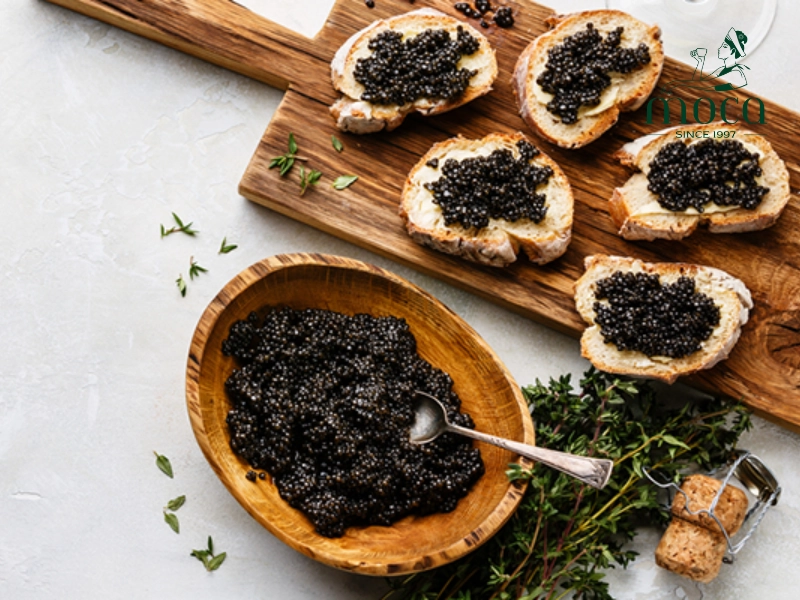
Discover caviar luxury redefined — only at Moca Dining.
The enduring appeal of caviar lies in its rare elegance, intricate flavors, and unparalleled sensory experience. Far beyond a simple ingredient, it stands as a true culinary jewel and a timeless symbol of gastronomic excellence. At Moca Dining, we invite you to explore the exquisite world of caviar in fine dining—a destination where tradition meets innovation, and every bite celebrates the pinnacle of taste and sophistication. Make your reservation today and indulge in a luxurious experience unlike any other.





